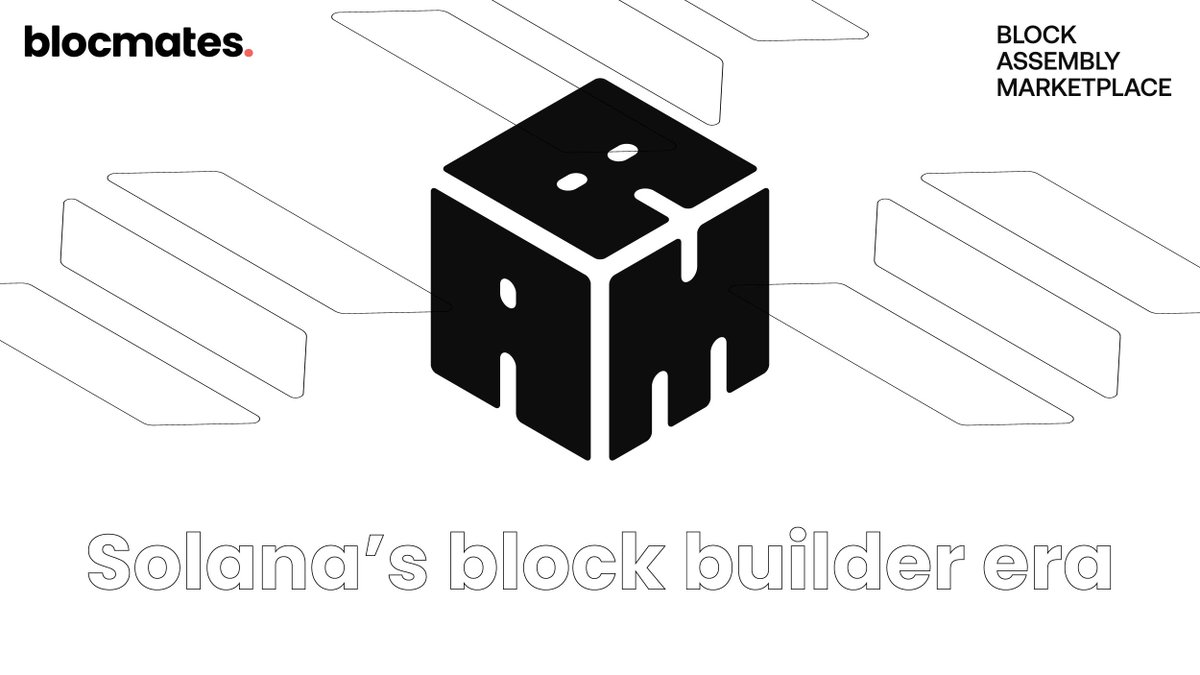Jito price
in USD$1.9300
-$0.13400 (-6.50%)
USD
We can’t find that one.
Check your spelling or try another.
Check your spelling or try another.
Market cap
$691.23M #71
Circulating supply
358.9M / 1B
All-time high
$5.3280
24h volume
$58.85M
4.2 / 5


About Jito
Jito’s price performance
Past year
-41.04%
$3.27
3 months
+9.16%
$1.77
30 days
-13.92%
$2.24
7 days
-13.77%
$2.24
Jito on socials

A quick look at Solana's latest roadmap: BAM transaction optimization, DoubleZero launch, Alpenglow consensus
Author: Anatoly Yakovenko, Solana Labs; Max Resnick, Anza; Lucas Bruder, Jito Labs; Austin Federa, DoubleZero; Chris Heaney, Drift; Kyle Samani, Multicoin Capital
Compiled by Alex Liu, Foresight News
Solana's original mission was to build a decentralized infrastructure for the Internet Capital Markets (ICM). Increasing bandwidth and reducing latency (IBRL) is necessary, but it is not enough. The third pillar of Solana's roadmap must respond to the complexity of the market microstructure. The market is made up of many dynamic factors that often have a large but unpredictable impact on the overall equilibrium. Until recently, it was unclear how ICM's market microstructure should be differentiated from traditional finance (TradFi).
Today, the Solana ecosystem is converging around a common vision: application-controlled execution (ACE). The ultimate goal of ACE is to enable smart contracts to control transaction ordering with millisecond precision. Our exchanges with multiple teams in the ecosystem show that market microstructure issues have become the most critical challenge facing Solana at present.
The Solana community is making every effort to overcome this problem from all dimensions.
Currently, Solana is still the best choice for building applications in the crypto space - with a large number of users, sufficient liquidity, a clear regulatory environment, excellent wallets, and global access infrastructure. However, some applications choose to build their own underlying technologies to explore new market structures. Solana needs to be the platform of choice that can "connect with existing users while boldly experimenting with market microstructures".
What follows will be divided into two parts:
major trade-offs in the market microstructure;
The specific solutions to support the implementation of flexible microstructures on the mainnet are divided into three categories: short-term, medium-term and long-term.
Trade-offs in the market microstructure
The design dimensions of the market microstructure are too rich to list, but here are some of the core trade-offs that are currently being used the most:
Privacy vs transparency
Should orders remain hidden before execution? For large retail orders, early broadcasting may help with better execution because it reduces information asymmetry between traders and market makers. However, hidden liquidity can also protect market makers from "harmful menus", thereby increasing overall market liquidity. However, this protection comes at a cost: hiding orders erodes transparency, making it difficult for traders to predict outcomes before they are executed.
Speed Limit vs Unlimited Trading
Setting up a "protective speed limiter" for takers can reduce adverse selection, narrow bid-ask spreads, and improve market liquidity. However, speed limiting likewise reduces trading volume and slows down the price discovery process. Importantly, trading volume is not the only measure of the market's strengths and weaknesses. What users really care about is where they can get the best price. Therefore, reducing "harmful taker trades" may reduce the total trading volume but increase real liquidity.
Transaction inclusion vs finality vs execution delay
Many seemingly "trade-offs" can actually be optimized together. The current optimistic finality of Solana is about 1 second. When the Alpenglow protocol goes live in early 2026, transaction inclusion time is expected to drop to 50–100 milliseconds, and finality time will be reduced to about 150 milliseconds. This will allow market makers to update quotes faster and reduce "gap risk".
Colocation vs. geographic decentralization
Many people think that colocation is faster, but if all validators are concentrated in New York, it will cause delays in message delivery when faced with a sudden message from Tokyo. Through the Multiple Concurrent Leaders (MCL) mechanism and the edge transaction inclusion mechanism, Solana can achieve global synchronous information ingestion, greatly improving price discovery efficiency and enhancing risk resistance.
Preferred market maker vs preferred taker
Market maker prioritization can reduce adverse selection and narrow spreads. In Solana's current mechanism, takers actually occupy an implicit priority position due to the scheduling auction mechanism. In the future, ACE will give developers the ability to define priority logic (e.g., cancel order priority, set speed limiters, etc.).
Retail vs institutional
The most liquid markets tend to be driven by retail investors. Solana encourages the construction of differentiated applications for different needs, serving the coexistence and development of institutions and retail investors.
Flexibility vs. uniformity
The Solana community has always embraced a pragmatic spirit, not dogmatism. Since there is no single optimal solution to the market structure, the only way is to test, iterate, and optimize in the mainnet. As a result, Solana is building a flexible infrastructure that supports ACE, driving the rapid evolution of market structures.
Hybrid architecture vs fully on-chain
Solana's goal is to build a fully on-chain marketplace rather than a settlement layer that serves centralized exchanges. There are no technical obstacles to this goal, just keep building. Solana's priority is to bring more liquidity to the mainnet.
ICM Roadmap: Short, Medium and Long Term Plans
The current Solana mainnet is not yet an ideal environment for CLOBs (central limit order books), but this is about to change. Multiple teams in the ecosystem are systematically upgrading the entire technology stack to drive CLOBs to prosper on the mainnet. We will introduce the future route in stages:
Short-term (1–3 months): Optimization of Jito BAM and Anza deals
Jito's Block Assembly Marketplace (BAM)
BAM is a next-generation high-performance transaction processing system built by Jito and is scheduled to go live on the testnet by the end of July 2025. It brings ACE closer to achieving ACE by providing powerful capabilities for Solana validators, traders, and applications through globally distributed nodes running in a Trusted Execution Environment (TEE). Projects such as Drift, Pyth, and Dflow have become the first design partners.
BAM supports the application of custom transaction ordering logic through a plugin mechanism, allowing developers to build transparent and verifiable transaction execution systems for CLOBs that keep transactions confidential until execution, but the ordering process is fully open-source and verifiable. This model eliminates the need to modify the validator client or negotiate the integration protocol, and simply builds a plugin within BAM to plug and play access the entire Solana network.
Recommended reading: Trading on SOL is no longer pinched? Read Jito's new BAM
Anza's transaction landing optimization
Anza is also promoting the improvement of transaction stability. Agave 2.3 introduces a new TPU client, significantly reducing transaction sending latency and fixing issues related to QUIC. Most of the optimizations are now live, and top market makers have observed a 95th percentile latency of 0 slot through the standard TPU path, achieving extremely high certainty.
Medium term (3–9 months) :D oubleZero, Alpenglow, Asynchronous Execution (APE)
DoubleZero( DZ)
DZ is a fiber optic network customized for Solana, significantly reducing latency and increasing bandwidth, and also optimizes data transmission through hardware multicast. The testnet has already participated in over 100 validators and 3% of mainnet staking, and is expected to be launched on the mainnet in mid-September 2025. With the popularity of DZ, Solana can increase transaction inclusion speed and further improve network stress resistance and fairness.
Alpenglow Consensus Protocol
Alpenglow is Solana's next-generation consensus protocol that reduces block finality from 12.8 seconds to about 150 milliseconds. The agreement will also simplify the design to facilitate future support for MCL and APE. It is expected to go live on the mainnet in late 2025 or early 2026.
Asynchronous Program Execution (APE)
APE removes the replay mechanism from the transaction landing path to reduce latency, which Solana has been a key goal for several years. With the simplification of Alpenglow consensus, the implementation complexity of APE is significantly reduced. Several proposals (SIMD 192, 290, 297, 298, 301) have been submitted and are expected to follow Alpenglow launch in the first half of 2026.
Asynchronous execution
Long term (2027): Multi-Parallel Leader (MCL) with protocol layer ACE
MCL with protocol layer ACE
To build the most liquid on-chain market, Solana needs to meet three points:
Sufficient capacity to ingest all market information in real-time;
Fast confirmation with higher tick rates;
Apps have the ability to control the order of transactions.
A single leader can review transactions
Currently, blockchains are mostly single-leader structures, which cannot ensure the fairness or censorship resistance of transaction ordering.
MCL reduces the likelihood that one leader will review or manipulate the order of transactions by co-building blocks at the same time. Transaction ranking is based on priority fees, and each application can design logic to control the ranking accordingly, such as canceling order priority.
Cancel orders based on priority fees
Globally synchronized information
MCL also enables information from different locations around the world to be synchronized on-chain. Market makers can combine real-time information from New York and Tokyo in the same contract for strategy development. This capability is difficult to replicate with traditional centralized systems and is a unique advantage of decentralized infrastructure in capital market competition.
Solana's vision of the Internet capital market is accelerating, and the entire ecosystem is working hard to build the world's most liquid on-chain financial system, from the bottom of the technology to the upper layer of applications. ACE will serve as the core paradigm, bringing a revolution in transaction ordering to Solana, giving smart contracts true control over the financial infrastructure.

Ethereum made block building a battleground with MEV, relays, and builders. Solana didn’t really have a dedicated layer for it until now.
Jito just unveiled BAM, or Block Assembly Marketplace. It's Solana’s first serious attempt to rethink how blocks are assembled, transactions are sequenced, and value is distributed.
BAM doesn’t rip up Solana’s base layer or demand for protocol changes. It’s a modular transaction layer built on top of Solana.
In this one, @ayan_kr1 takes you through BAM's phased rollout and explains how this launch will help test, scale, and eventually hand over control to the broader Solana ecosystem.
🔗

Guides
Find out how to buy Jito
Getting started with crypto can feel overwhelming, but learning where and how to buy crypto is simpler than you might think.
Predict Jito’s prices
How much will Jito be worth over the next few years? Check out the community's thoughts and make your predictions.
View Jito’s price history
Track your Jito’s price history to monitor your holdings’ performance over time. You can easily view the open and close values, highs, lows, and trading volume using the table below.

Jito on OKX Learn
What is Jito (JTO)? Popularizing liquid staking on Solana
Following in the footsteps of Lido and the the bonus liquidity it provides, crypto users might be pleased to read that liquid staking has made its way on Solana in the form of Jito. As a liquid stakin

Jito (JTO) Token: Exploring Solana’s Largest Liquid Staking Protocol and Its Market Dynamics
Introduction to Jito (JTO) Token and Its Role in the Solana Ecosystem The cryptocurrency landscape is constantly evolving, with innovative projects reshaping decentralized finance (DeFi). Among these,

Jito FAQ
Currently, one Jito is worth $1.9300. For answers and insight into Jito's price action, you're in the right place. Explore the latest Jito charts and trade responsibly with OKX.
Cryptocurrencies, such as Jito, are digital assets that operate on a public ledger called blockchains. Learn more about coins and tokens offered on OKX and their different attributes, which includes live prices and real-time charts.
Thanks to the 2008 financial crisis, interest in decentralized finance boomed. Bitcoin offered a novel solution by being a secure digital asset on a decentralized network. Since then, many other tokens such as Jito have been created as well.
Check out our Jito price prediction page to forecast future prices and determine your price targets.
Dive deeper into Jito
Jito Network is a liquid staking protocol on Solana. Protocol users can stake SOL and receive JitoSOL in return. Beyond staking rewards, Jito Network's liquid staking token also captures MEV rewards. JTO is the governance token for the Jito Network.
Disclaimer
The social content on this page ("Content"), including but not limited to tweets and statistics provided by LunarCrush, is sourced from third parties and provided "as is" for informational purposes only. OKX does not guarantee the quality or accuracy of the Content, and the Content does not represent the views of OKX. It is not intended to provide (i) investment advice or recommendation; (ii) an offer or solicitation to buy, sell or hold digital assets; or (iii) financial, accounting, legal or tax advice. Digital assets, including stablecoins and NFTs, involve a high degree of risk, can fluctuate greatly. The price and performance of the digital assets are not guaranteed and may change without notice.
OKX does not provide investment or asset recommendations. You should carefully consider whether trading or holding digital assets is suitable for you in light of your financial condition. Please consult your legal/tax/investment professional for questions about your specific circumstances. For further details, please refer to our Terms of Use and Risk Warning. By using the third-party website ("TPW"), you accept that any use of the TPW will be subject to and governed by the terms of the TPW. Unless expressly stated in writing, OKX and its affiliates (“OKX”) are not in any way associated with the owner or operator of the TPW. You agree that OKX is not responsible or liable for any loss, damage and any other consequences arising from your use of the TPW. Please be aware that using a TPW may result in a loss or diminution of your assets. Product may not be available in all jurisdictions.
OKX does not provide investment or asset recommendations. You should carefully consider whether trading or holding digital assets is suitable for you in light of your financial condition. Please consult your legal/tax/investment professional for questions about your specific circumstances. For further details, please refer to our Terms of Use and Risk Warning. By using the third-party website ("TPW"), you accept that any use of the TPW will be subject to and governed by the terms of the TPW. Unless expressly stated in writing, OKX and its affiliates (“OKX”) are not in any way associated with the owner or operator of the TPW. You agree that OKX is not responsible or liable for any loss, damage and any other consequences arising from your use of the TPW. Please be aware that using a TPW may result in a loss or diminution of your assets. Product may not be available in all jurisdictions.
Market cap
$691.23M #71
Circulating supply
358.9M / 1B
All-time high
$5.3280
24h volume
$58.85M
4.2 / 5




































